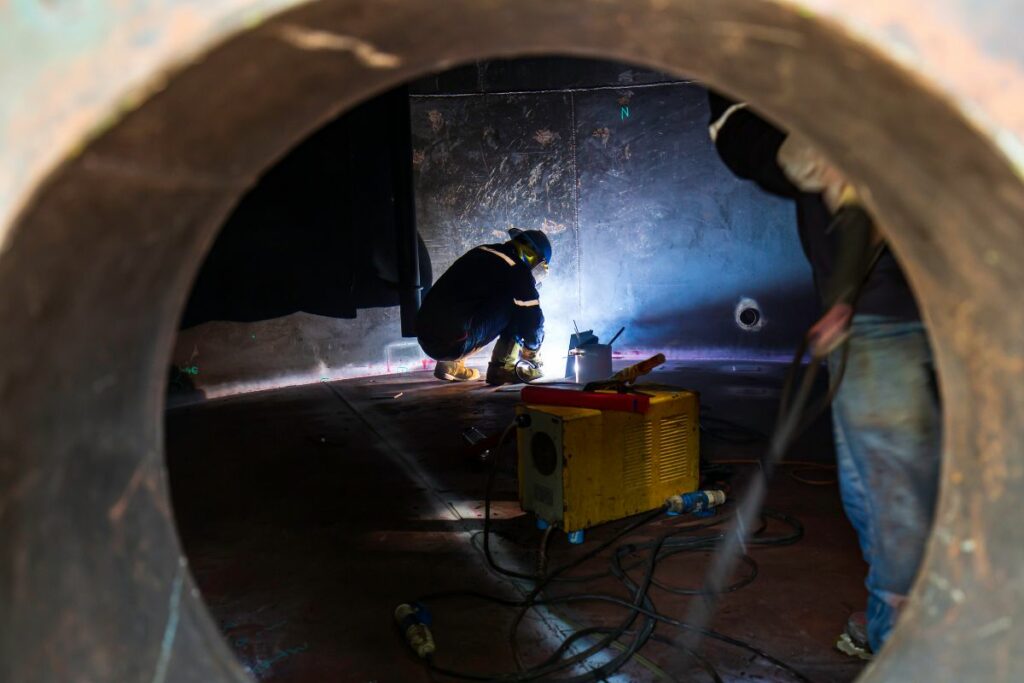
The construction of a submarine is an impressive feat of human engineering that demands precision, skill, and meticulous attention to detail. Among the many aspects of building submarines, welding stands out as a critical process that unites the vessel’s steel components with strength and reliability. To comprehend the significance of welding in submarine construction, we can draw valuable lessons from the recent tragedy involving OceanGate’s Titan submersible. An event that illustrates the dire consequences of subpar welding and structural integrity.
The tragedy of the Titan submersible serves as a haunting reminder of the consequences of poor construction, and substandard welding. The Titan met a tragic end during a deep-sea dive exploring the Titanic wreckage when the submersible malfunctioned and eventually imploded, resulting in the death of its five passengers.
One of the primary factors contributing to the Titan’s catastrophic fate was its poor design. Made with inadequate materials and welding techniques, rendering the vessel vulnerable to the extreme pressures of the deep ocean. The Titan proved to be no match for the crushing forces in the depths, causing the submersible to implode. This disaster underscores the critical importance of high-quality fabrication and welding in submarine construction, especially where human lives are concerned.
Welding is a fundamental process in the construction of submarines, which are subjected to extreme pressures and demanding environments. The quality of welding is pivotal for the safety and functionality of these underwater vessels. Proper construction can make all the difference in life and death situations. Let’s take a closer look at the crucial role of welding in submarine construction:
Submarines must endure enormous water pressure as they plunge to great depths. Proper welding ensures the structural integrity of the vessel, preventing leaks, cracks, and other vulnerabilities that could jeopardise the safety of the passengers.
Submarines spend prolonged periods submerged in saltwater, which can lead to corrosion. High-quality welding techniques and materials are essential for creating corrosion-resistant joints and surfaces.
As submarines descend into deeper waters, they encounter escalating pressure levels. Inadequate welding can result in joints and seams failing under this pressure, potentially leading to catastrophic consequences.
Submarines must carefully balance buoyancy and weight to maintain precise depth control. Precision welding allows for the construction of lightweight yet durable components, facilitating efficient operation.
Advancements in welding technology have significantly enhanced the quality and safety of submarine construction. Some of the contemporary welding techniques employed in the industry include:
This traditional welding method remains in use for specific applications in submarine construction due to its reliability and simplicity.
FCAW is often preferred for its deep-penetration capabilities and the capacity to produce strong, clean welds in challenging conditions.
Automation plays an increasingly significant role in submarine construction, with robots capable of producing consistent, high-quality welds while reducing risks to human welders.
Modern submarines undergo comprehensive non-destructive testing, including ultrasonic inspections, to ensure the integrity of welds and other critical components.
Welding serves as the cornerstone of submarine construction, guaranteeing the structural integrity, safety, and longevity of these intricate vessels. The Titan submersible incident serves as a stark reminder of the importance of high-quality welding and construction in maritime engineering. Modern welding techniques, materials, and testing methods have come a long way, enabling the creation of submarines that can confidently navigate the depths of the ocean with precision and reliability.
In the continual pursuit of underwater exploration and defense, the lessons learned from past tragedies guide ongoing advancements in welding and construction techniques, ultimately ensuring that submarines remain steadfast and secure beneath the waves.